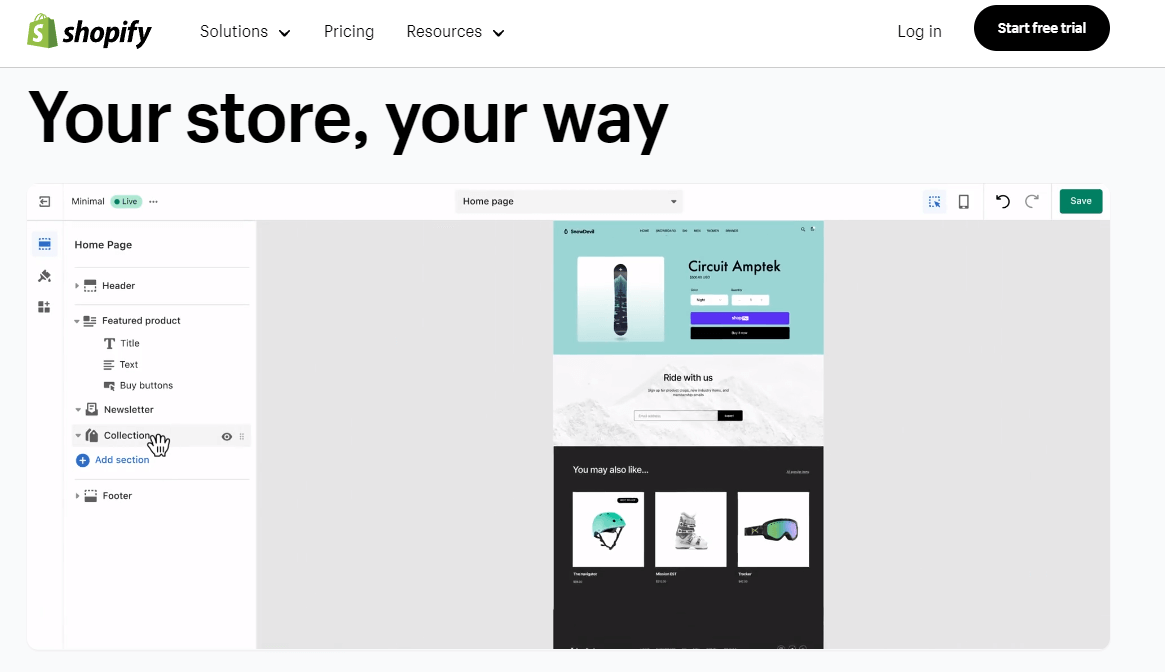
Shopify
One of the popular eCommerce development websites, Shopify is being used widely to establish various digital retail stores. An eCommerce website developed using Shopify is likely to be SEO- friendly as compared to traditional sites. However, additional SEO practices are essential to make it stand out among other competitors. Submitting a Shopify sitemap is one of the crucial parts and this blog will be focused on accomplishing it correctly. Let’s know some of the incredibly useful Shopify SEO Services that push your website toward the top of search engine results.
What is an XML sitemap for Shopify?
The most crucial component of your SEO is your XML sitemap. Google will identify and crawl your site’s important pages and keep a list of them using the sitemap’s information. Google can comprehend the structure of your website by using the XML sitemap.
An XML sitemap is a text file that contains all of your URLs and is written in “eXtensible Markup Language”. It might also contain additional data (referred to as metadata) on particular pages, such as when they were most recently updated, how important they are, and whether they are available in other languages.
Due to the fact that it alerts search engines to any changes right away, this supplementary information is especially helpful to them.
Why Are Sitemaps for Shopify Important?
Simply said, “Sitemaps are crucial for SEO and site navigation”. Your clients are practically lost in the web store if not having an HTML sitemap, making it less likely that they will find the things they desire. Google will struggle to crawl your website’s URLs outside of an XML sitemap and be incapable to find the data it requires to promote you in the SERPS.
For large sites, XML sitemaps are extremely crucial. A sitemap will quicken Google’s crawl of large websites, which can take a while. An XML sitemap can also help new websites, websites with abandoned pages, and websites with a lot of images or videos.
If your site’s internal linking isn’t great, Google can crawl your site using a sitemap rather than depending on your links.
We’ll concentrate on XML sitemaps in this section because they’re more significant for SEO. To discover more about HTML sitemaps and how they help your SEO and visitors, see our article on the advantages of HTML sitemaps.
How to Make a Sitemap for Shopify
After being familiar with sitemaps and their importance for your website. Let’s have a look at how you can make an XML sitemap for your Shopify eCommerce store.
An amazing thing about making an XML sitemap is that none of the labor-intensive work is required. Having a Shopify site, Shopify will create your sitemap for you immediately. Links to the following will be included in your file: Products, pictures of goods, blog entries, collections, and Pages.
When you upload new content, such as updates to a website, new goods, collections, photographs, or blog posts, these files are also instantly updated.
However, depending on the sort of Shopify account you have, your sitemap will differ:
- A sitemap file is given to your site’s main domain on a basic account, where it can be seen by search engines.
- You can create regional and national names using Shopify’s additional international domains option on any other account. If you make advantage of this functionality, search engines may find and crawl all of your domains thanks to sitemaps.
- Having a Shopify site, you might already have a sitemap for your website.
How can you Locate Your Sitemap?
It’s simple to locate your Shopify sitemap. Simply enter your URL with an ending using /sitemap.xml in the browser’s search box. Your sitemap will appear immediately.
Typically, the Shopify child sitemaps must include the following:
- Product pages: Each item you offer has a sitemap.
- Sitemaps are available on your product collection pages.
- Blog posts: A sitemap is a collection of all of your blog posts.
In conclusion, using the guide above, you can easily locate your sitemap which is a crucial part of the entire SEO process. It enhances your site’s indexability and crawlability. You can opt for Shopify SEO Services at Think Shaw to implement all of these recommendations appropriately.






